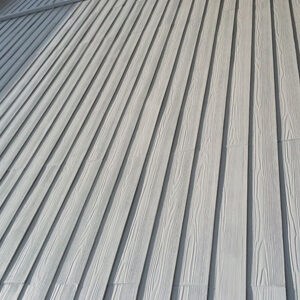
The wood texture fiber cement plank is designed to provide the look of natural wood without the drawbacks, and this includes a high resistance to insects and termites.
Here is a breakdown of why this material does not typically attract or host termites and other pests:
Does Not Attract Termites or Pests
The core material of fiber cement is what deters insects:
- Inedible Composition: Fiber cement is made from a composite of cement, sand, and cellulose fibers. The high cement content means the material is primarily inorganic and does not offer a nutritional food source (cellulose) that termites can easily digest. It is considered termite-resistant and inedible to pests.
- Density and Hardness: The material is dense and hard, making it physically difficult for wood-boring insects like termites, carpenter ants, and even woodpeckers to chew through or burrow into for nesting.
- Moisture Resistance: Unlike natural wood, fiber cement resists moisture and does not rot. Rotting wood is a major attractant for termites, carpenter ants, and other pests. By preventing damp, decaying conditions, fiber cement removes one of the key invitations for an infestation.
Important Caveat: Installation and Maintenance
While the material itself is highly resistant, it’s crucial to understand how an infestation could still occur on a fiber cement-sided home:
- Underlying Wood Structure: Termites will always seek out the actual wood structure of your home (the framing, sheathing, etc.). If they find an entry point, they will bypass the fiber cement to get to the wood underneath.
- Gaps and Openings: Poor or neglected installation and maintenance can create entry points:
- Unsealed Joints/Caulking: Gaps around windows, doors, corners, and where planks meet can let moisture in, which attracts termites and provides access to the underlying wood.
- Siding-to-Ground Contact: The siding should maintain a proper clearance from the soil (typically at least 6 inches) to prevent termites from building mud tubes directly from the ground to the wood components behind the siding.
- Damaged Planks: While durable, severe impact damage that creates large cracks can also create a new entry point if not promptly repaired.
In summary: The wood texture is just a surface design. The material underneath is cement-based and is intentionally designed to be termite- and insect-resistant. For maximum protection, ensure the siding is properly installed and all seams and joints are well-maintained
OCT
2025
